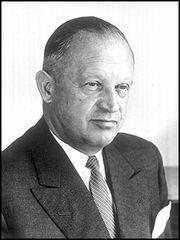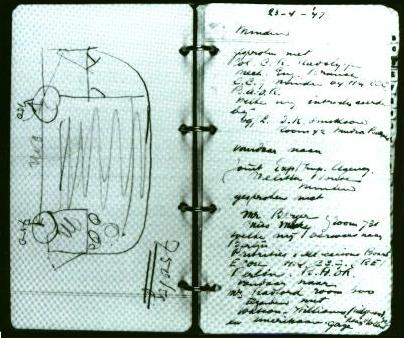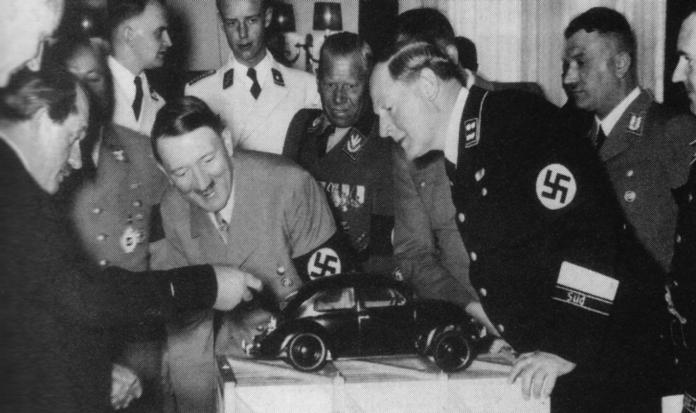
覧覧覧覧覧覧覧覧覧覧覧覧覧覧覧覧覧覧覧覧覧覧覧覧覧覧
覧覧覧覧覧覧覧覧覧覧覧覧覧覧覧覧覧覧覧覧覧覧覧覧覧覧
The History of the Volkswagen Transporter.
覧覧覧覧覧覧覧覧覧覧覧覧覧覧覧覧覧覧覧覧覧覧覧覧覧覧

The history of the VW goes back to pre 2nd world war Germany. Adolf Hitler
was apparently influenced by Henry Ford whilst in prison during 1923. Then in
1933 Hitler became chancellor and at the Berlin auto show his intentions to get
Germany motoring. Then a year later at the 1934 show he stated that his
government would support the development of a 'peoples car'.
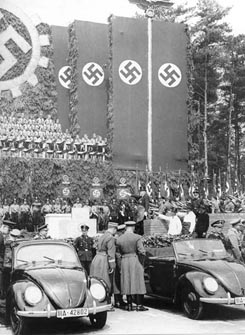
Ferdinand Porsche had a vision of a mass produced vehicle that was affordable
to the average German, an idea that appealed to Hitler. Impressed by Porsche's
design capabilities, Hitler delivered him the design brief of a car that could carry
two adults and three children at 60mph withabout 33 mpg. Porsche was not
convinced, but considered the project a challenge, and took it on.
Around 1936 the development program was transferred to the Nazi German
Labour Front who would use German workers contributions to pay for a new
factory. Meanwhile Porsche visited the US to view some of the production
methods used there, and recruited some German immigrant engineers who had
worked in these factories.
On the 26 May 1938, Hitler ceremoniously laid the cornerstone of the new
factory. It was here that Hitler declared that the model would be known as
the 'KdF-Wagen' and the surrounding town that was built to support the
factory would be known as the 'KdF-Stadt', production was to start in
September 1939 - this turned out to be the same month that World War
Two was declared.
__________________________________________________________
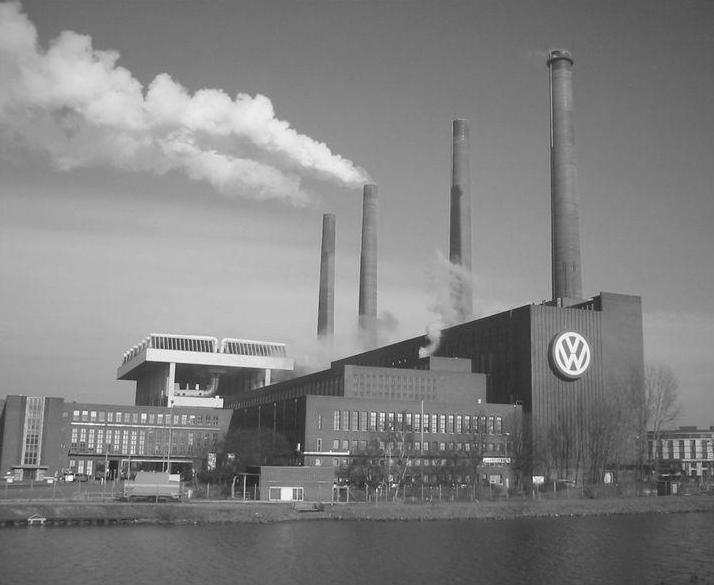
As the War started up, the KdF-Wagen was put on hold and production
changed to military vehicles. The 'Kubelwagen' used the tried and tested
and very successful chassis and air-cooled engine developed for the
peoples car. In 1942 the Kubelwagen was joined by the Schwimmwagen.
For most of the war, the KdF plant had managed to escape heavy bombing.
Near the end of the war the factory was used to manufacture the unmanned
aircraft V1 bomber and the factory became a main target for the allied
bombing raids and after several bombing raids by the US, the factory in ruin.
The 2nd world war ended and Hitler committed suicide in 1945, the task
was now to rebuild Germany. The Kdf factory fell under control of the British,
and Major Ivan Hirst restarted the production of the beetle. The Kdf-stadt
was renamed Wolfsburg, taking its name from the nearby castle.
__________________________________________________________
Major Hirst and his team required a small vehicle to move parts around the
factory, they constructed a flatbed vehicle based on a beetle chassis, known
as a Plattenwagen. This vehicle was basically a platform on wheels, with the
drivers seat and controls at the rear directly above the engine.
In 1946, Ben Pon (the first VW beetle importer) visited the VW factory in
Wolfsburg, where he noticed the odd looking Plattenwagen shuttling parts
around the factory, in his notepad he made the first sketch of his idea for the
Volkswagen Transporter.
__________________________________________________________
Ben Pon returned to Wolfsburg in 1947 with ideas of what a transporter
could look like. His notes stated that the vehicle should carry 1500lb and
the driver and the controls be mounted at the very front. Development
began about 1948 when Heinz Nordhoff (Volkswagenwerks Director)
took control of the factory and gave the go-ahead for development of the
transporter. The first prototype blueprints were produced and the model
which was chosen had a curved front and no overhanging peaked roof.
__________________________________________________________
Through the experimental stages of the Volkswagen transporter, it was
known as a Type 29. But Volkswagen dropped the second digit when
they introduced the all-new Volkswagen to the world in 1949.
Thus becoming the world famous Type 2, or Bulli.
The first production Type 2 (Chassis 20-00-001) came off the line on
the 8th of March 1950 at Wolfsburg. By 1954, production of the
transporter at Wolfsburg was at maximum and plans of another factory
to increase the production were set in motion.
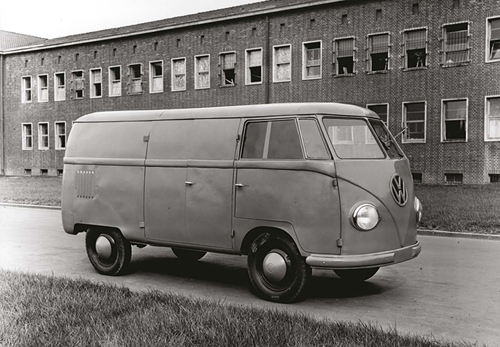
The new factory was built at Hannover and the first transporter came
off its assembly line on the 9th of March 1955 (chassis number 171056).
On the 19th April 1956 all transporter production at the Wolfsburg plant
was ceased and transfered over to Hannover (from chassis number 178004).
Splitscreen transporter production continued for 17 years (1950 to 1967),
only with small changes through out all those years. In August 1967
production of the splitscreen ceased to make way for the new shape
transporter commonly known as the bay.
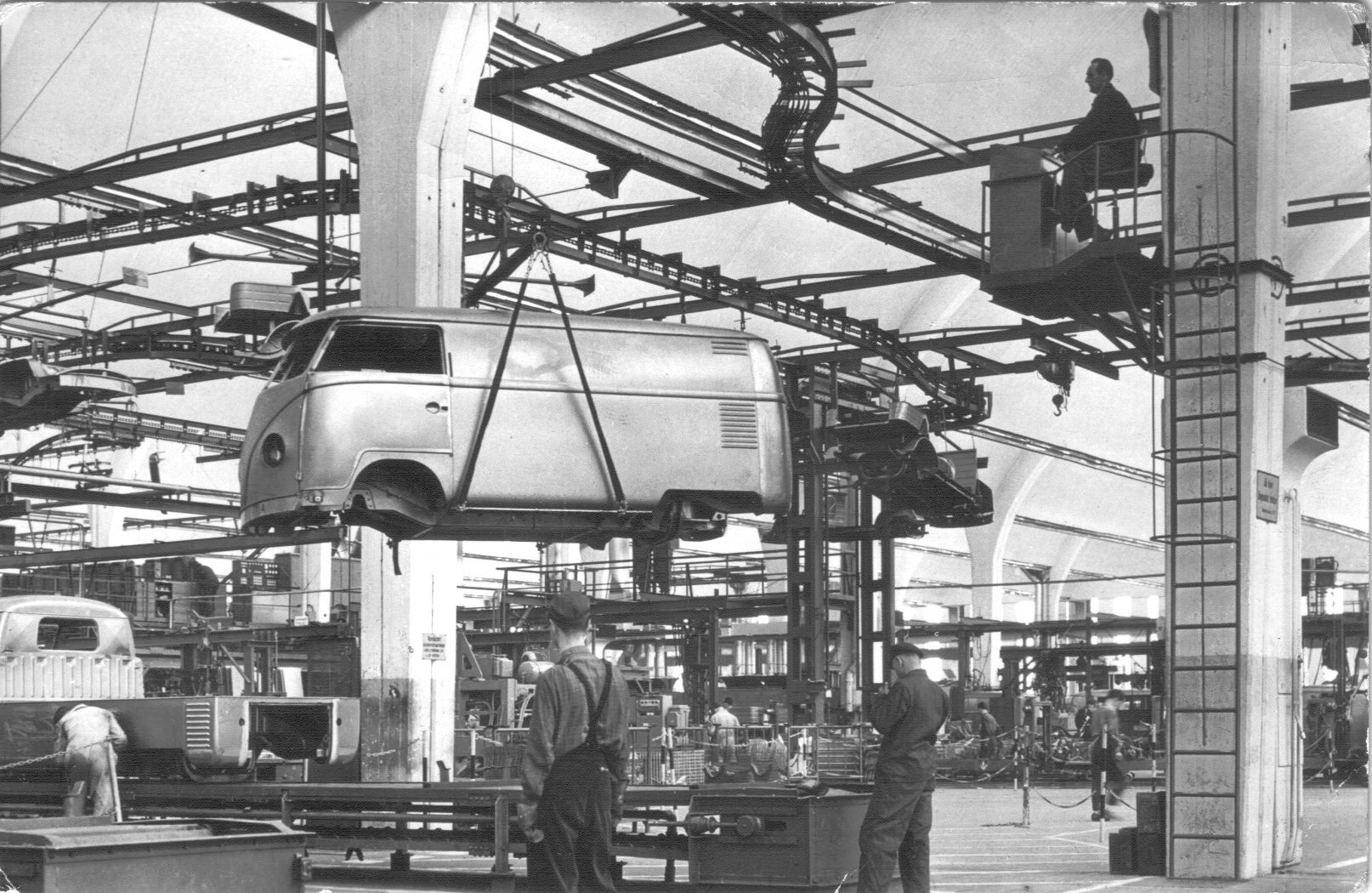
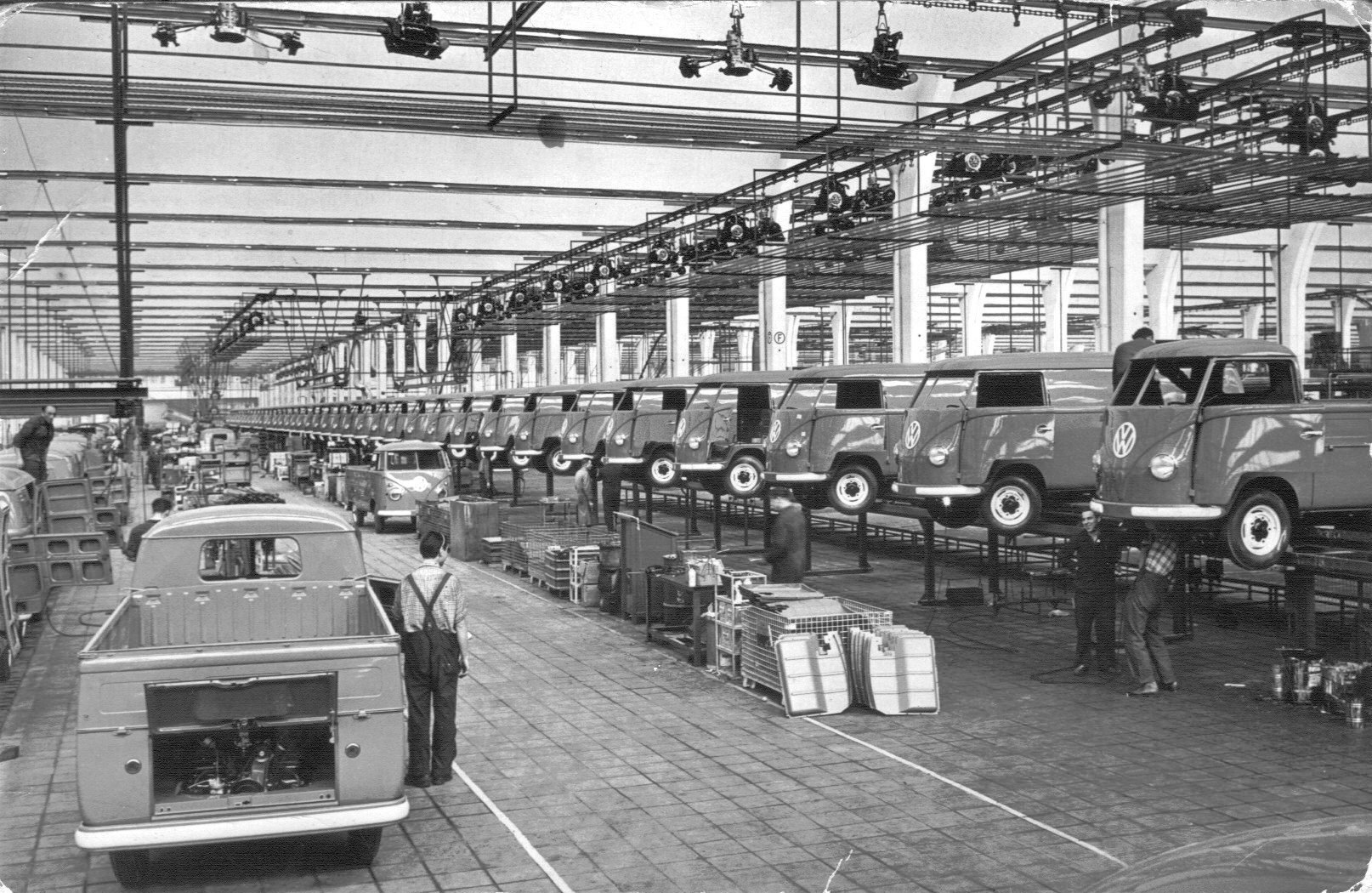
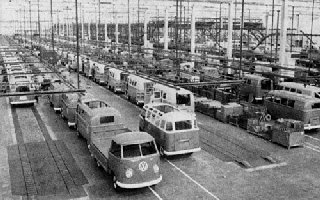
覧覧覧覧覧覧覧覧覧覧覧覧覧覧覧覧覧覧覧覧覧覧覧覧覧覧
Significant Dates for the Volkswagen Transporter.
覧覧覧覧覧覧覧覧覧覧覧覧覧覧覧覧覧覧覧覧覧覧覧覧覧覧
12th November 1949 ~ Volkswagen launch the Type 2.
08th March 1950 ~ Introduction of the Commercial Vehicles.
22nd May 1950 ~ Introduction of the Microbus.
01st June 1951 ~ Introduction of the 8 & 9 Seater Deluxe Microbus Samba.
13th December 1951 ~ Introduction of the Ambulance (Krankenwagen).
25th August 1952 ~ Introduction of the Single Cab Pick-Up.
10th March 1953 ~ Deluxe Microbus gets rear bumper.
09th October 1954 ~ 100,000th Transporter.
04th March 1955 ~ Introduction of peeked roof and full width dashboard.
March 1956 ~ Volkswagen Hanover Factory begins production.
13th September 1956 ~ 200,000th Transporter.
03rd November 1958 ~ Introduction of the Double Cab Pick-Up.
25th August 1959 ~ 500,000th Transporter.
20th September 1962 ~ 1,000,000th Transporter.
July 1963 ~ The last small rear window model (1-144-281)
August 1967 ~ End of 17 year Production. ~ The last Splitscreen ever made was chassis no. (217-148-459).
